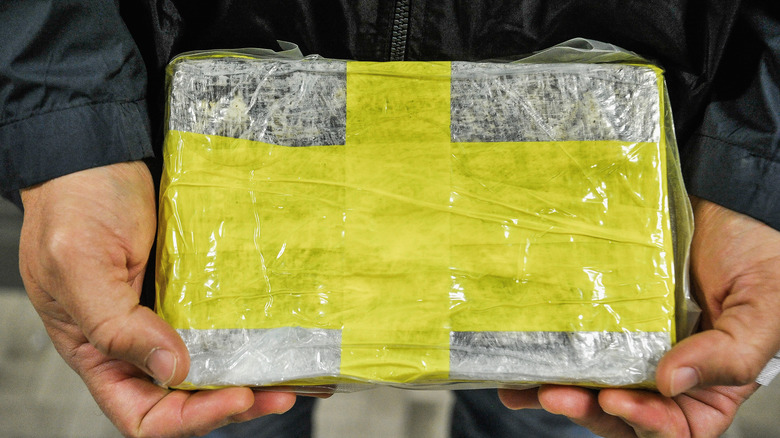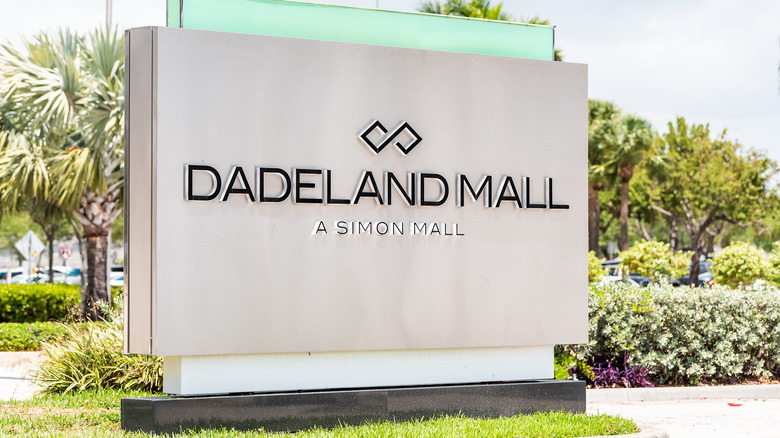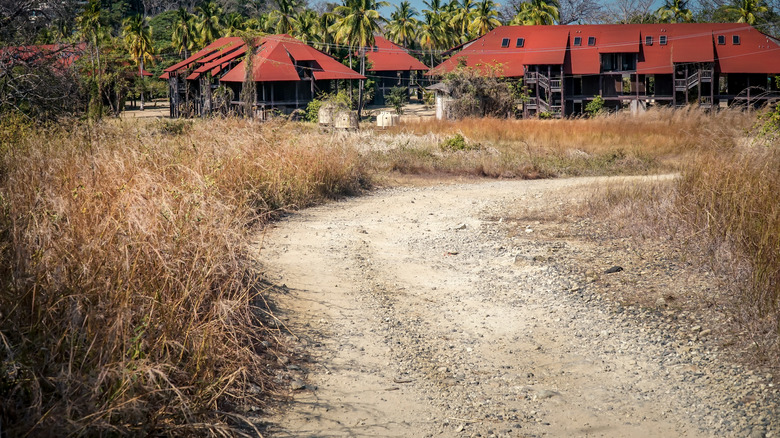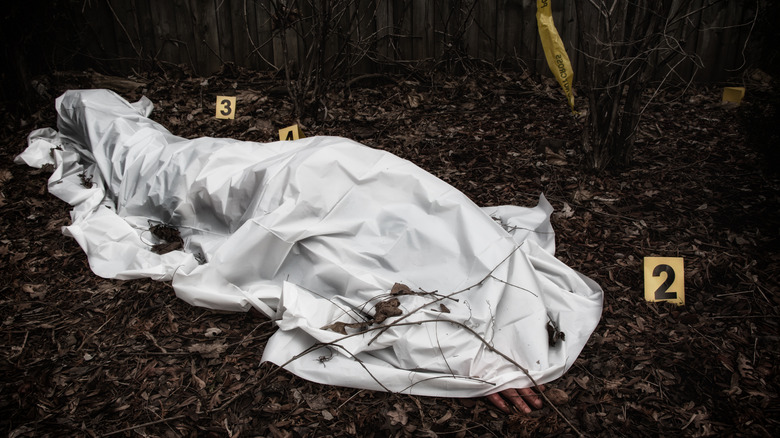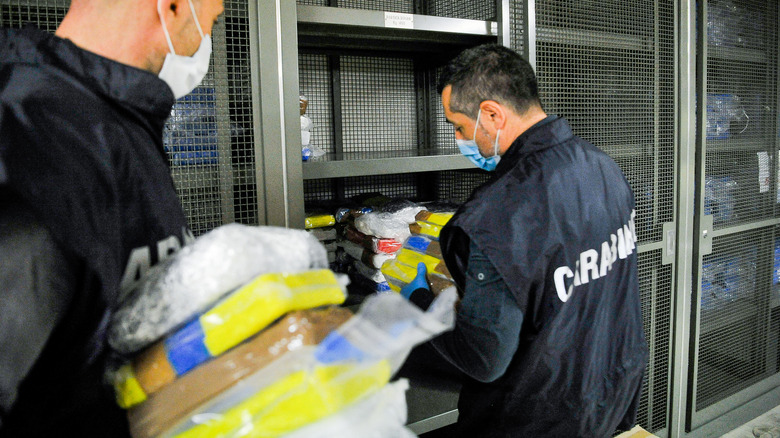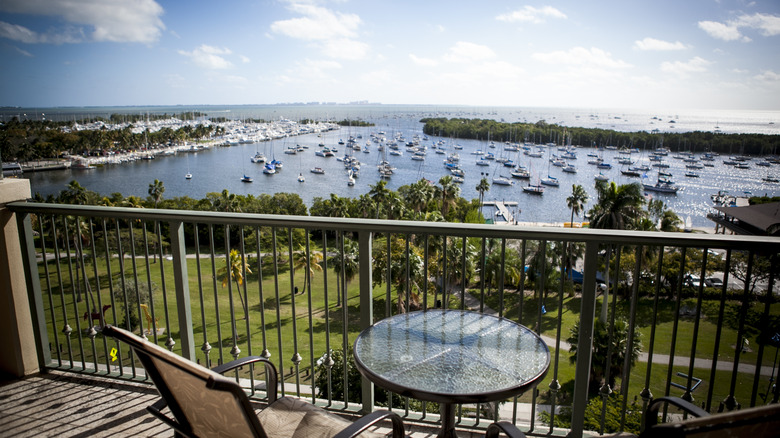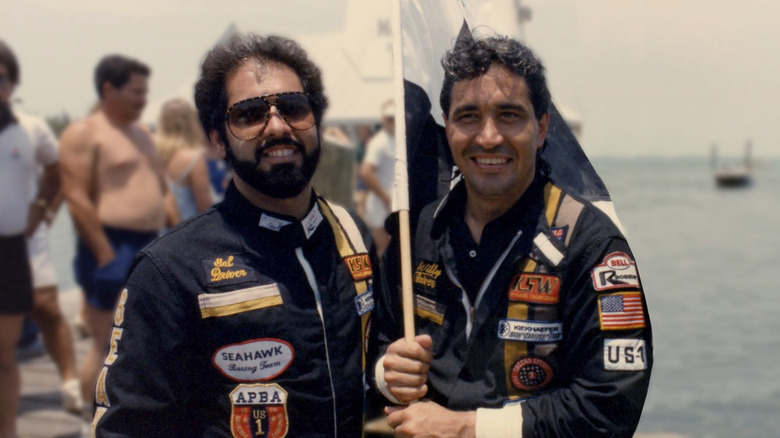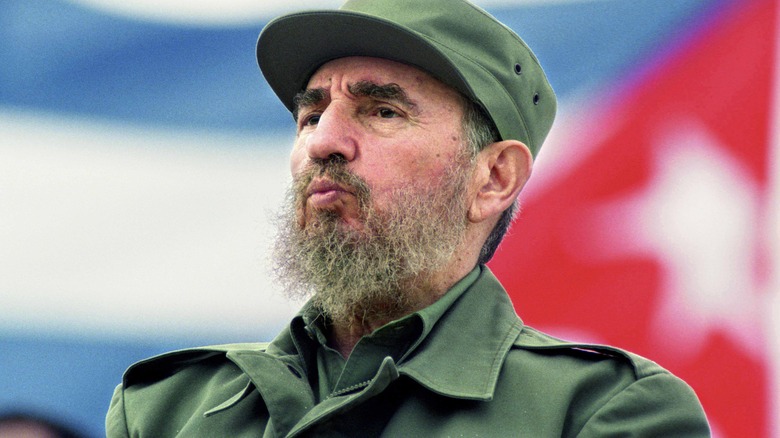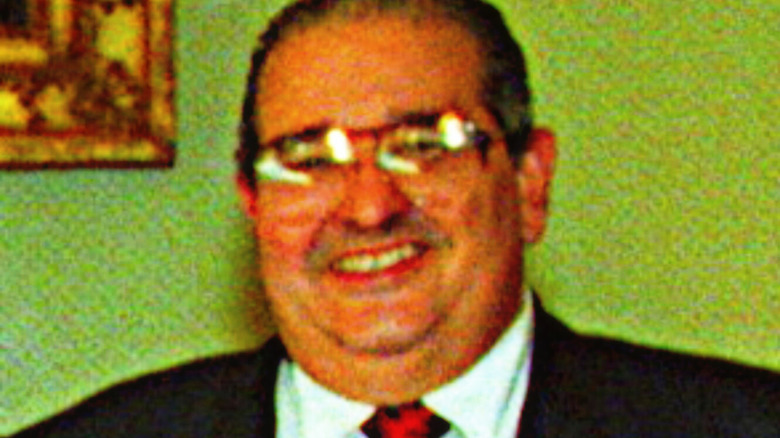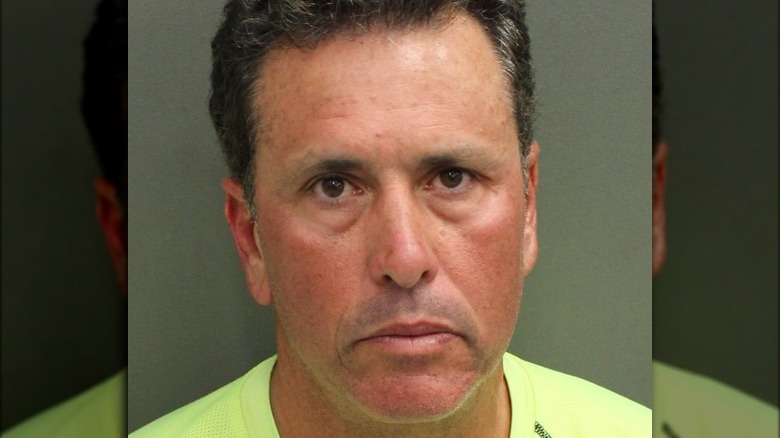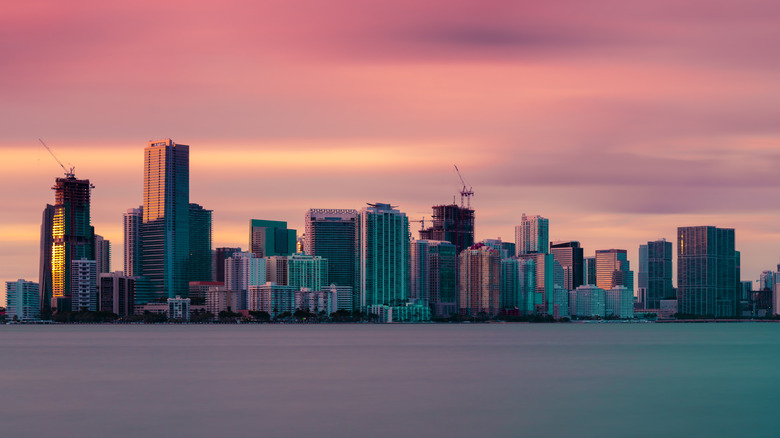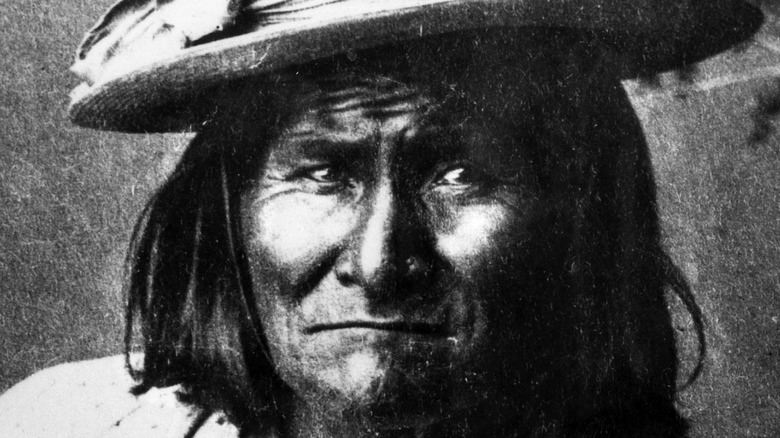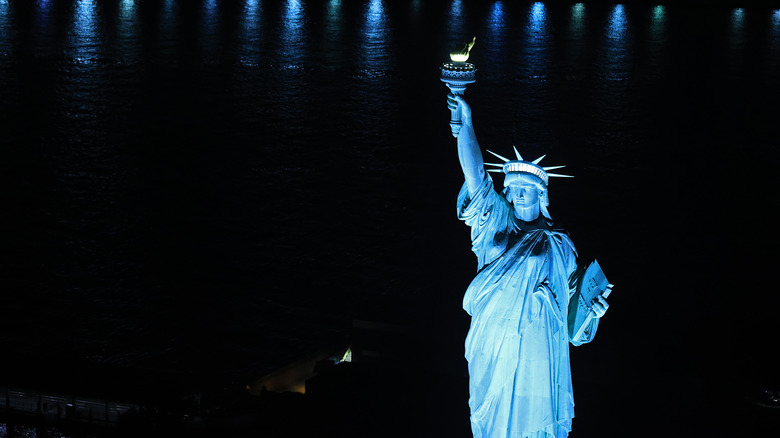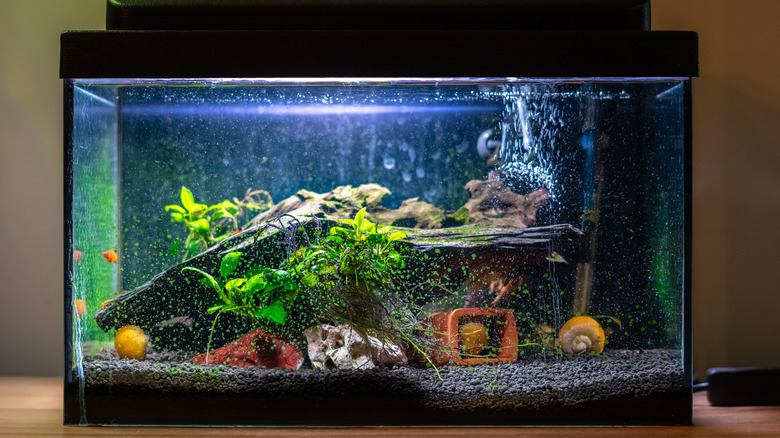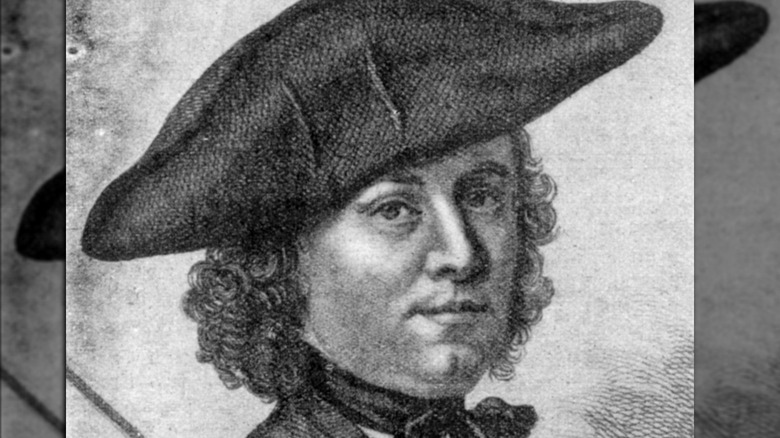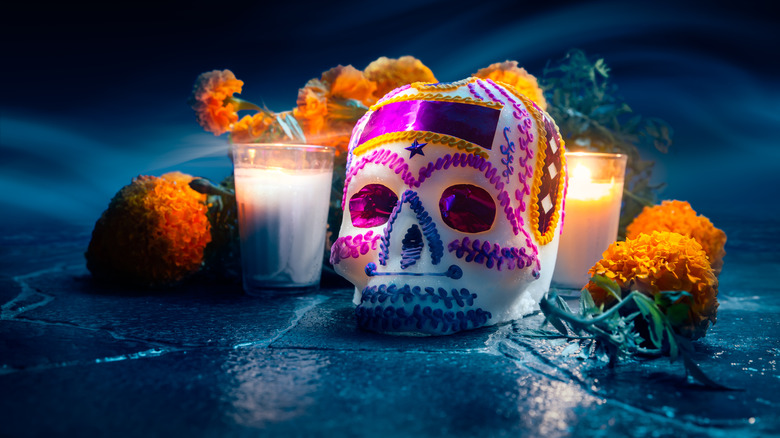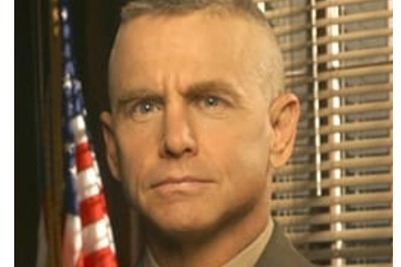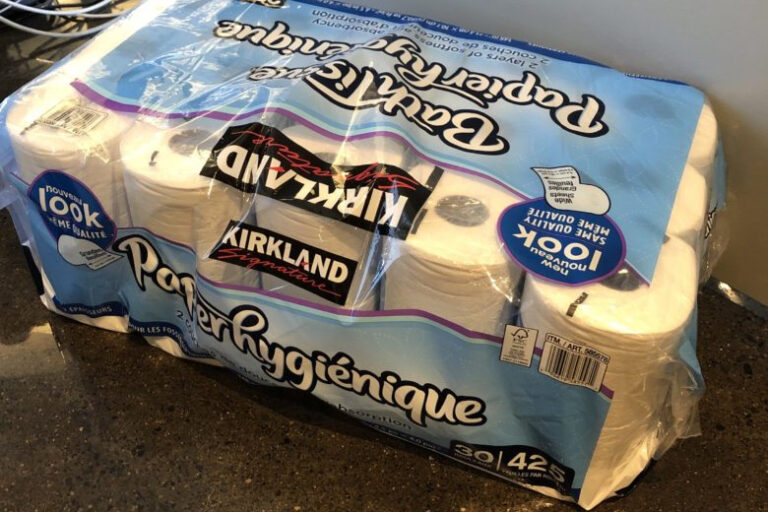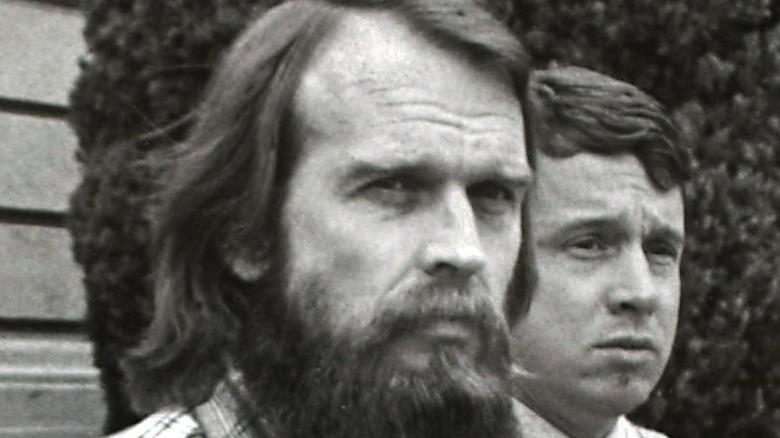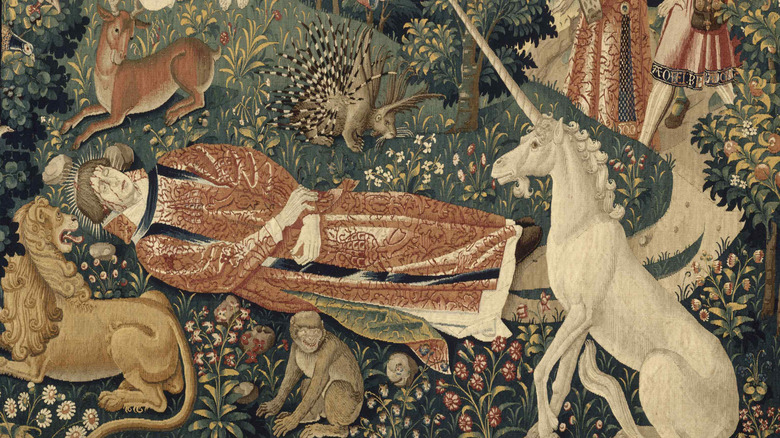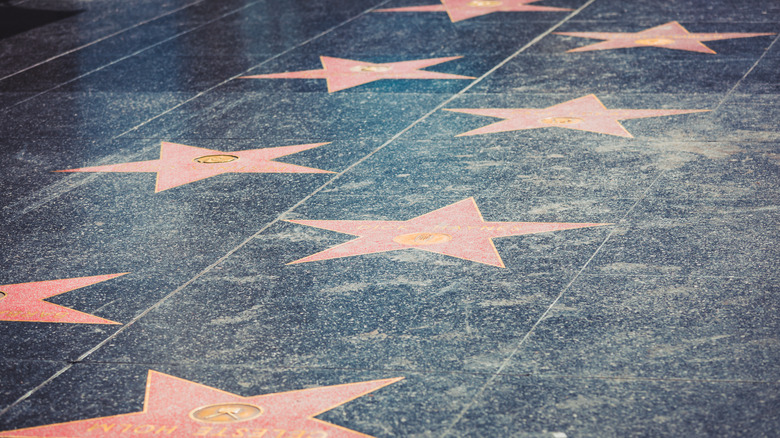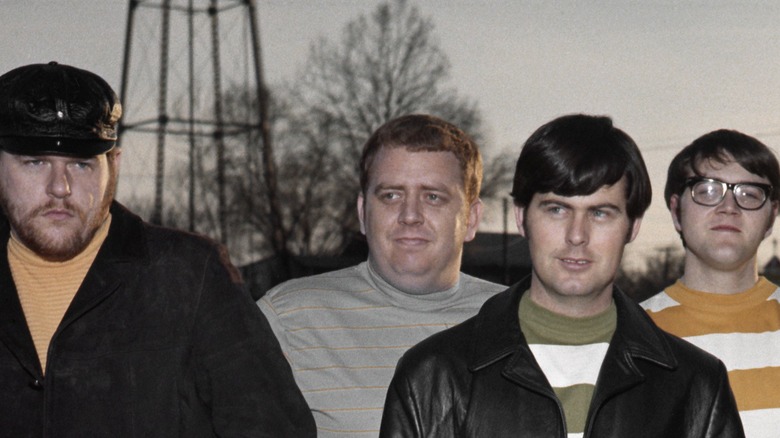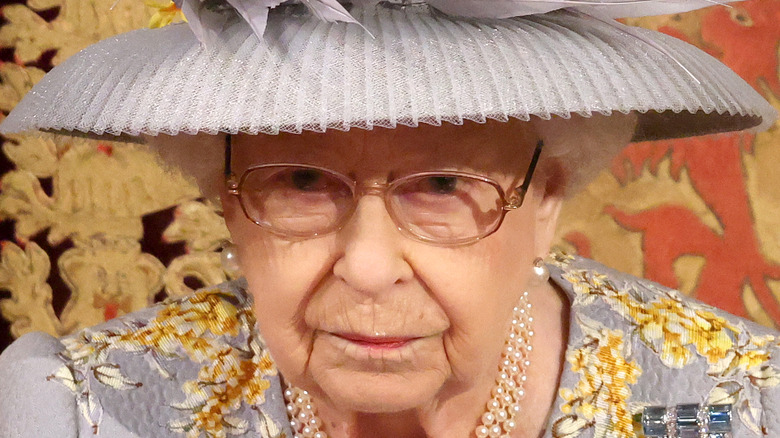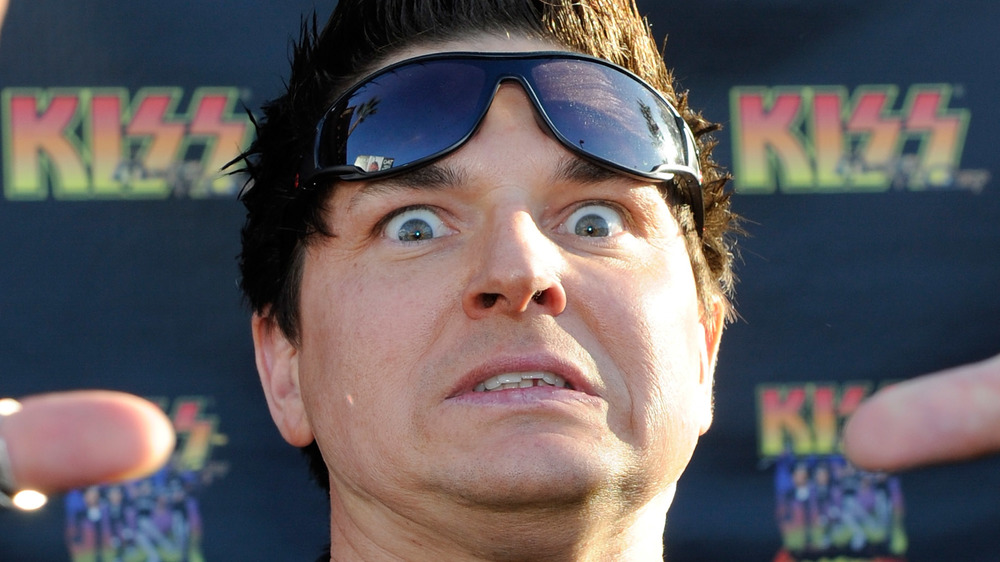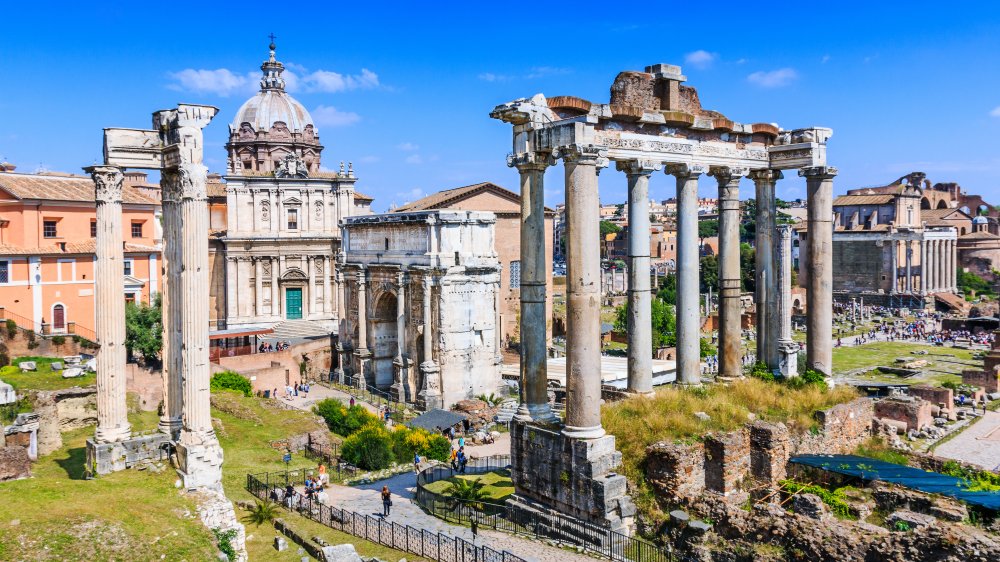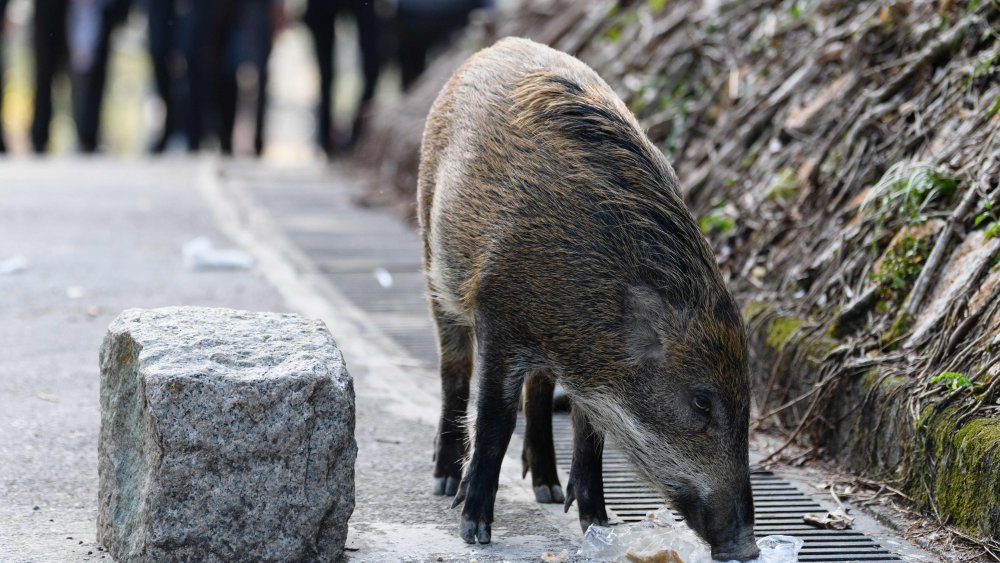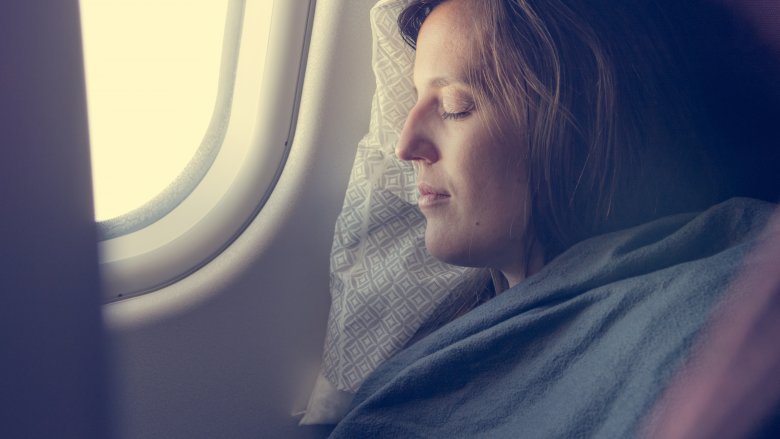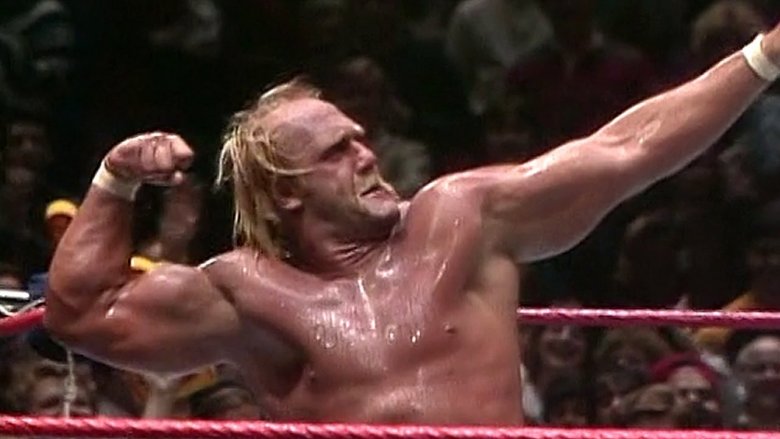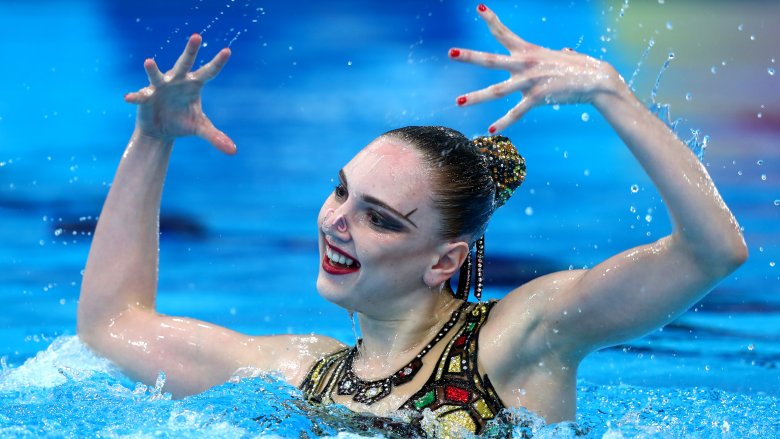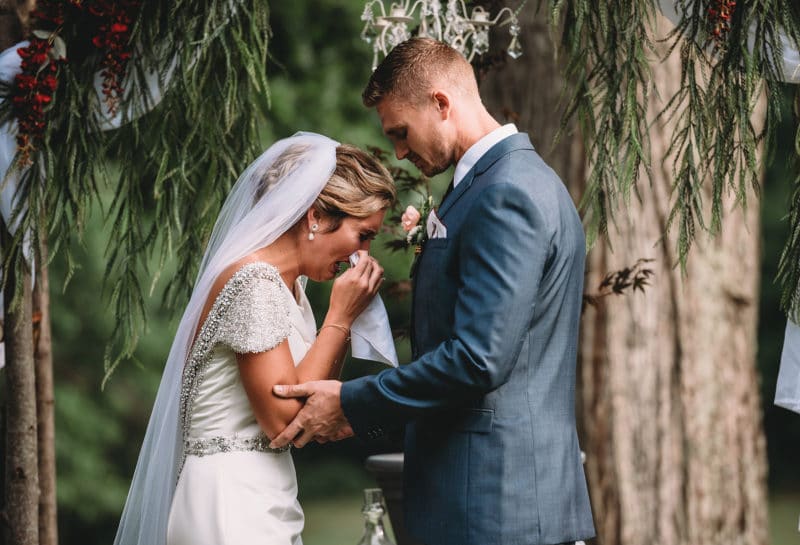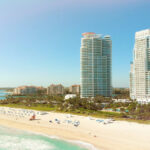
The Untold Truth Of The Miami Drug War
Cocaine was such an integral part of the ’80s it should almost be considered a hallmark of the era. Musicians and actors were overdosing on it left and right. Enough stories from 1980s Hollywood revolve around the stuff that it wouldn’t be surprising to find out that cocaine had its own line on your favorite production’s itemized budget, but the cocaine that flooded the decade wasn’t all parties and rock star life. It was part of an extremely violent drug scene.
You probably know about the “War on Drugs” started by former President Nixon in 1971, but you might not know about the Miami drug war which took place in southern Florida throughout the ’80s. The War on Drugs may have been raging longer, but the Miami drug war was much more violent during the short time in which it took place. But that’s what you get when rival cartels war for rights to distribute their cocaine throughout the United States.
Though the war wasn’t a “war” in the traditional sense, there were many casualties, and just like with the military-industrial complex, there were those who profited off it immensely. But at the end of the day, the Miami drug war was a crapshoot, an interesting crapshoot that had economic, entertainment, political, and deadly details worth knowing. Let’s take a look at them.
This was the time of the 'cocaine cowboys'
To really understand the era known as the Miami drug war, you first have to understand “cocaine cowboys.” The term has become popular thanks to a couple documentaries released about the people involved in the South Florida drug scene during the ’80s, when narcotics were flooding the streets, including Netflix’s documentary “Cocaine Cowboys: The Kings of Miami.” The time was commonly referred to as the “wild west” of drugs because, as True Crime Obsessed mentions, drug lords ran the streets under their own rules and mass violence was all too common.
Those involved in the supply chain that brought the drugs into the States and ordered or carried out the violence were known as “cocaine cowboys,” a term South Miami Recovery says was first coined by the police. These outlaws included a number of famous names on the scene. According to NBC, the likes of Jorge “Rivi” Ayala, a hitman for one of the more notorious cartels, committed dozens of executions. Smugglers like Mickey Munday were hauling loads from Pablo Escobar and the Medellin Cartel. Many others operated in the Miami area as well, getting into shootouts with the police and running the city’s underground however they saw fit, with the war only ending when the Medellin Cartel fell apart. Given South Florida’s history during this time and the Prohibition era, Miami might be due for another such “wild west” anytime now.
The Miami drug war kicked off with the 1979 Dadeland Mall shootout
The era of the “cocaine cowboys” wasn’t a slow progression. Sure, the tensions had likely been rising for a while as different cartels pushed to have their products brought into the United States, but most agree that the violence and chaos that really defines the Miami drug war was kicked off with a single event. On July 11, 1979, as NBC explains, a volley of bullets rained through the Dadeland Mall as the type of shoot-out you’d expect to see in an old western film took place in the Crown Liquors store. Hitmen armed to the teeth jumped drug lord German Jimenez Panesso and his bodyguard, and the two were killed, but they didn’t go down quietly. Two employees were also wounded during the gunfight and bullets holes riddled the walls and parking lot.
Gangster Report says the attack was believed to have been ordered by Griselda “The Godmother” Blanco over a personal debt. See, some of Blanco’s men had robbed Panesso’s home the year before, taking a substantial amount of expensive stuff, and it was Blanco’s responsibility to pay back that debt. Apparently, bullets were the cheaper option.
Though no one has been charged with the mall killings, the local police department was pretty sure hitman Jorge Ayala was one of the triggermen. It’s not surprising given the number of murders the guy confessed to and his relationship to Blanco. He was, after all, her favorite hitman.
Most of the fighting was on behalf of two drug lords
The majority of the unofficial Miami drug war took place between two rival cartels. On one side, as Billy Corben, the director of the “Cocaine Cowboys” documentaries explained to Distraction Magazine, was the infamous Medellín Cartel, originally founded by the drug lord Pablo Escobar, but at this time it was in the vicious hands of Griselda Blanco. On the other side of the war was Luis “Papo” Mejia who created a drug network all the way to New York, according to Gangster Report, and who Corben tells NPR was constantly at war with Blanco. But why?
That fancy New York drug trade network Papo created was the start of the problem. It was an unauthorized expansion he started while his father was still in power, and Blanco wasn’t a fan. In return, she had Papo’s father murdered along with 11 members of Papo’s crew. The Miami drug war raged on with two of the most powerful drug lords at each other’s throats, and things got bad.
About a year after Papo’s father was killed, Blanco tried to have Papo killed as well, while he was at Miami International Airport. One of the hitmen hired for the deed stabbed Papo 10 times with a WWII bayonet given to him by Blanco because, so it’s rumored, he was a “pig” and deserved to be “stuck like a pig.” The hit didn’t go to plan though, and Papo survived.
An overload of dead bodies
Following the hit on Panesso, all hell seemed to break loose in Miami. The number of murders taking place because of the drug war had put a serious strain on the Miami-Dade morgue, according to the Miami New Times. The bodies were pouring in, and they didn’t have space to store them all. In 1980, there had been 573 recorded homicides, and 1981 saw even higher numbers by the end of the year, with a total of 621 killings. And these are only the recorded murders. Who knows how many bodies could’ve been thrown into the Atlantic, especially since many of the people involved were Colombian immigrants, and there’s a good chance not all of them had paperwork.
The numbers drove Miami into the number one slot. It was now the murder capital of the United States, and the morgue could no longer cope. In order to take in all the bodies that were dropping in the streets of the city, the morgue had to start spending $800 every month to rent a large refrigerated truck because nobody wants to deal with a pile of bodies at room temperature, ever.
The morgue and the officials knew what was going on, and they’d voiced their concerns, but there was little anyone could do to stop the drug war. And as for the morgue — well — they had to continue renting the refrigerated truck until 1988 when they moved into a newer facility.
The majority of the drugs came through Miami
The Miami drug war was a time when drug cartels and smugglers could make a good chunk of cash if they were willing to brave the violence and/or help create it, and many of them did. This is, of course, made evident by the volume of narcotics entering through Florida. You know, enough to supply most of the country.
According to a The New York Times article from 1981, in the early years of the drug war, it was estimated that the bulk of narcotics were being brought in through the state. Let’s get down to numbers. A whopping 70% of all the cocaine smuggled into the United States was believed to have come through Florida, along with 70% of the nation’s marijuana supply and 90% of the knockoff Quaaludes that were so popular during the era.
Now, the government didn’t sit idly and allow these drugs to come into the country; they made these smugglers work for their money. As the Los Angeles Times records, the Reagan administration, which lasted most of the ’80s when the Miami drug war was underway, tried to quell smuggling by using the Navy and Air Force to intercept loads, but it couldn’t stop the cocaine from raining like snow. No hard feelings though. It’s just that cocaine smuggling is virtually impossible to stop because the countries that provide the drug are so comparatively impoverished that the high profit margin will always allow them to find a way.
Mutiny Hotel was the place to cut a deal
Even amidst the turf wars and cartel violence of South Florida during the Miami drug war, there was still one place that was “the place to be” if you were a drug lord, and that was The Mutiny Hotel. The hotel is located on Sailboat Bay in Coconut Grove, and according to the Miami Herald, it has a long history intertwined with the drug trade.
The Mutiny was where any who wanted a taste of the Florida underground hung out, as the Miami New Times explains. Be it drug dealers or the cops who chased them, celebrities, or spies, everyone gravitated to the place. It had some extra special amenities that accommodated the drug kingpins of Miami quite well too. Hit men and mercenaries were always on hand, and if you brought your own piece or drugs or cash to the hotel, they could be safely locked in your suite. If you preferred to keep your weapons on you, the hostess would tuck it up her skirt when the cops came in.
But the most important things that went down at the famed hotel were the deals. Contracts were made, shipments scheduled, and pilots hired. Anything your heart desired could either be found at The Mutiny or secured from one of its visitors. Cocaine cowboys and kingpins took advantage of it nightly.
One pair emerged on top in Miami and they were peaceful
The point of the drug war was to ensure that the biggest of the cartel leaders and drug lords were making the most money possible by trying to push anyone stepping on their toes out of the game and out of that whole being alive thing. There was plenty of money to be made, and in Miami, there was one pair who became figurative kings of the city. Contrary to the rest of the players, these guys were believed to be relatively peaceful too.
According to the Netflix trailer for “Cocaine Cowboys: The Kings of Miami,” Willy Falcon and Sal Magluta, two of the most notorious kingpins of the era, were revered as a couple folk heroes akin to Robin Hood. In some ways this is true. They didn’t steal from the rich, but they also weren’t shy about spreading their wealth, and they had plenty of it to go around. According to The Miami New Times, the pair had smuggled over $2 billion worth of cocaine over the course of their run. When they were finally arrested in 1991, they had over $1 million in jewelry and cash in their house along with a kilogram of solid gold.
One thing that helped their image is that they rarely seemed to kill anyone. In fact, the only person they’re thought to have killed, as NY Daily News explains, is their former lawyer, Juan Acosta.
Part of the money went to support CIA assassination attempts
The kings of Miami spent some time in prison following convictions for money laundering, but they didn’t stay there forever. Well, Sal Magluta is serving life in a Supermax (via The St. Augustine Record), but Willy Falcon was released in 2017. The next step for Falcon was deportation, and he wasn’t excited about it.
See, Falcon was born a Cuban citizen and was only a resident in the U.S., so there was a good chance he could be deported to his homeland. He fought the deportation because he feared it would get him killed since, you know, he (and Sal) had been funneling a portion of their cocaine profits to a CIA-backed group of terrorists who tried to kill Fidel Castro, according to The Miami Herald. That sort of treason usually comes with harsh consequences, so the U.S. deported him to the Dominic Republic instead.
And these Cocaine Cowboys weren’t the only drug cartels or smugglers thought to be involved with the federal agency. Mercury News, as the Institute for Policy Studies explains, has compiled evidence that the CIA had been involved with numerous drug-trafficking rings. Of course, the agency has denied most of these claims despite the evidence. Though they have had ties to several groups involved with narcotics in South and Central America over the years, so it’s no surprise big names like Willy and Sal were some of them who got involved.
A lawyer becomes president
The Miami drug war and the era of the cocaine cowboys had reached far beyond the streets of Miami, Florida. The products came from outside countries, obviously, but the war itself allowed some of those involved to attain their political aspirations. It would be hard to know who all of these were since people in positions of political power don’t tend to get there if they commit crimes while being sloppy about the coverups.
One such beneficiary, who did later get found out, is the former U.S.-installed president of Panama, Guillermo Endara. According to Aljazeera, Endara had been owned by the cartel who filled the power vacuum after the Medellin cartel had fallen apart, but he was operating in the drug trade in one way or another even before that. As the Miami New Times points out, Endara had helped Willy Falcon and Sal Magluta set up bank accounts and dummy corporations where they’d launder their ill-gotten funds while he was still working as a lawyer. He was also friends with the lawyer who was thought to have been murdered by the cocaine cowboys.
When Endara’s scandal became public, he swore he didn’t know Falcon and Magluta and had no clue they were tied to the drug trade, but yet, he served as treasurer of some of their dummy corps. So, there’s a good chance the dude was lying. Regardless, he’s no longer the president of Panama.
The last cocaine cowboy was arrested in 2017
The most famous of the cocaine cowboys involved in some way or another with the Miami drug war, Willy Falcon and Sal Magluta, were arrested in the early ’90s, but they weren’t the last of the cocaine cowboys roaming about. Though it’s pretty much the end of the era, there were plenty of these drug lords and smugglers to track down, and the last of them was arrested in 2017.
According to NPR, Gustavo Falcon, brother to Willy Falcon, was indicted at the same time as the other two, but he managed to evade arrest on the day they kicked in the doors to cuff his friends and co-workers in 1991. Now the extraordinary part: Gustave continued to evade the authorities for the next 26 years.
The last of the cocaine cowboys was found living in Orlando, Florida, under someone else’s identity. You’d think he’d move a bit further away, but apparently not. After a stint of painful stakeouts that lasted several weeks and having been forced to watch Gustavo take a 40-mile bike ride, the authorities finally nabbed him. It looks like that time on the run allowed for some leniency too since the United States Department of Justice says he only received an 11.25-year sentence for narcotics conspiracy while his partners had gotten it much worse. Remember, Sal is serving life.
The Miami drug war was the inspiration for a hit TV show
A time period as crazy, violent, and exciting as the Miami drug war was sure to spin out some media capitalizing on it. The documentaries we’ve already touched on, but there have also been a couple of books and, of course, the drug war has some clear tie-ins to the movie “Scarface,” such as the — well — most of it. Then, according to the New York Daily News, there’s the TV show inspired by it: “Miami Vice.”
Seems a little odd that the show would be inspired by and airing at the same time the drug war was actively going on, but there’s a good chance that made the premise all the more attractive to producers. It’s real, and it’s going to sell. Director Michael Mann says (via NPR) he latched onto this and used the inspiration from the global drug trade and how it hit Miami to fuel the show.
Another odd tie-in to “Miami Vice” is how its co-stars, Don Johnson and Philip Michael Thomas, spent time at The Mutiny Hotel. The Miami New Times says Johnson partied there, whereas Thomas lived there with his family for a stint. This was all in the ’80s while the Miami drug war was rocking strong. Maybe all the kingpins enjoyed their show as much as everybody else.
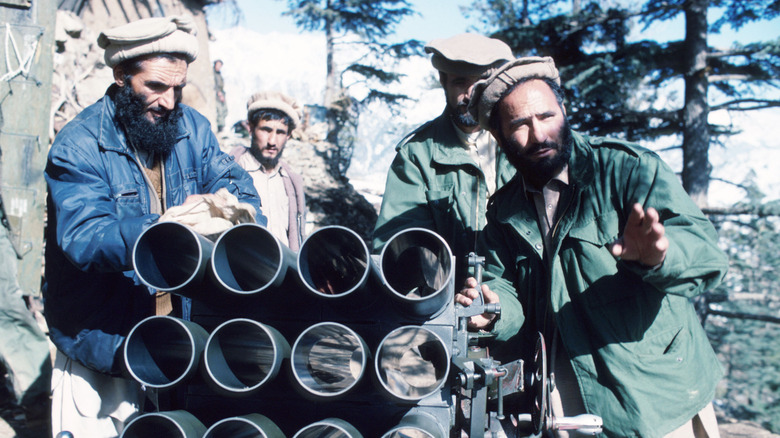
What Really Happened In Operation Cyclone?
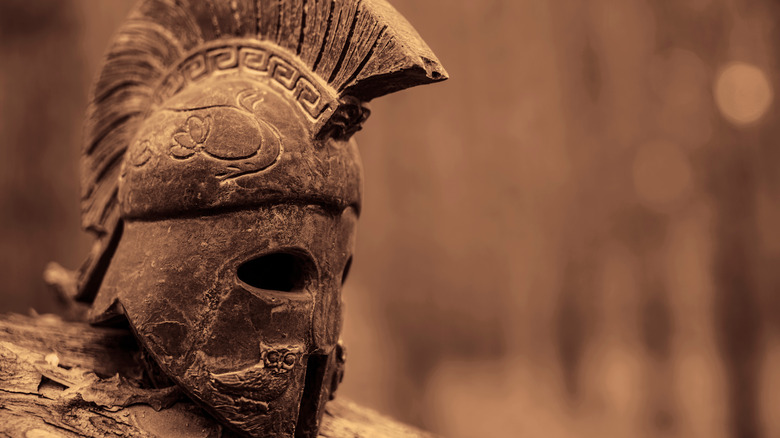
The Mythology Of Ares Explained
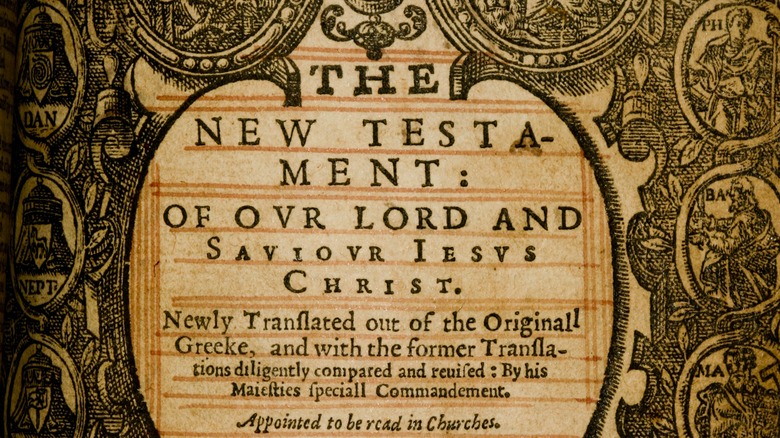
The Untold Truth Of The King James Bible
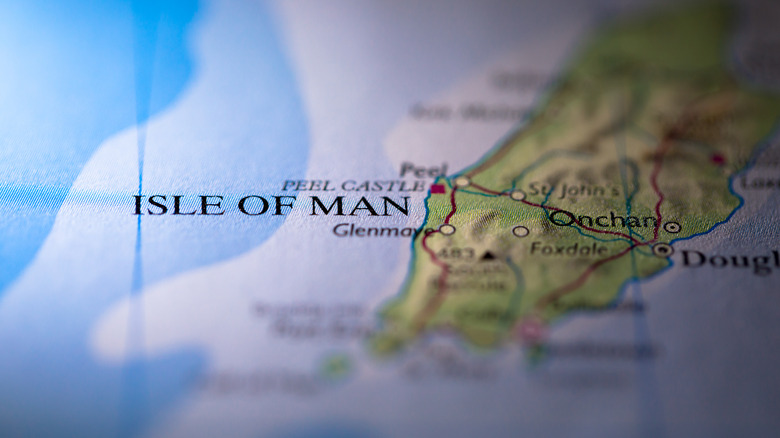
What You Should Know About The Last Native Speaker Of Manx
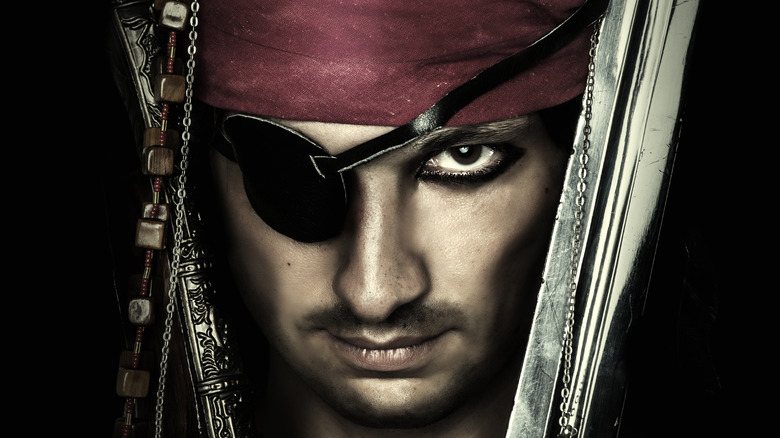
The Reason Pirates Wore Eye Patches Isn't What You Think
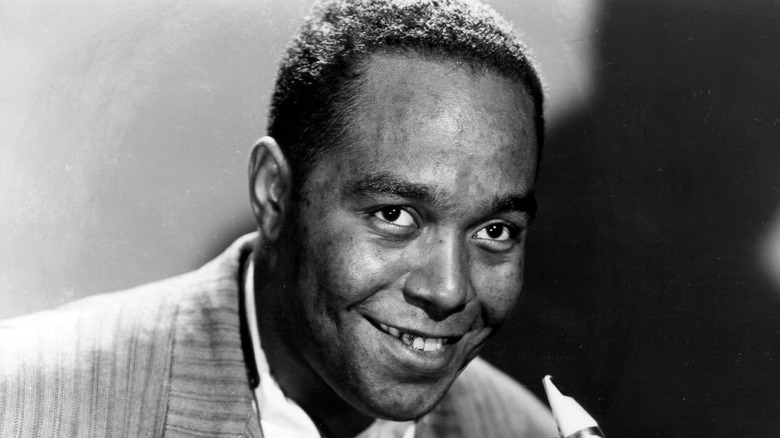
The Strange Death Of Charlie Parker
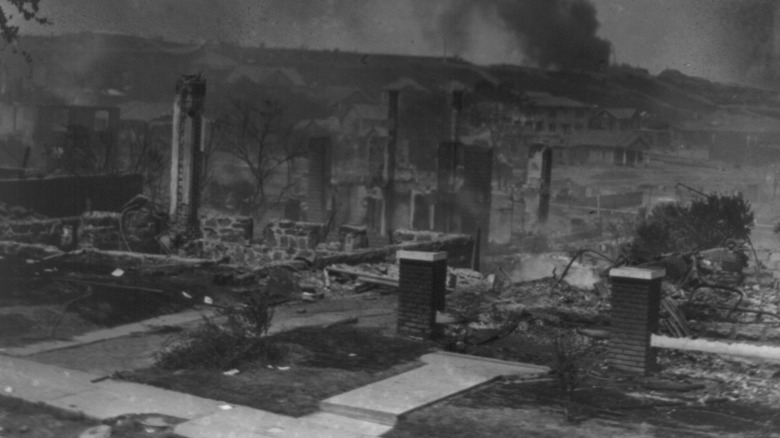
What Really Sparked The Tulsa Race Massacre?
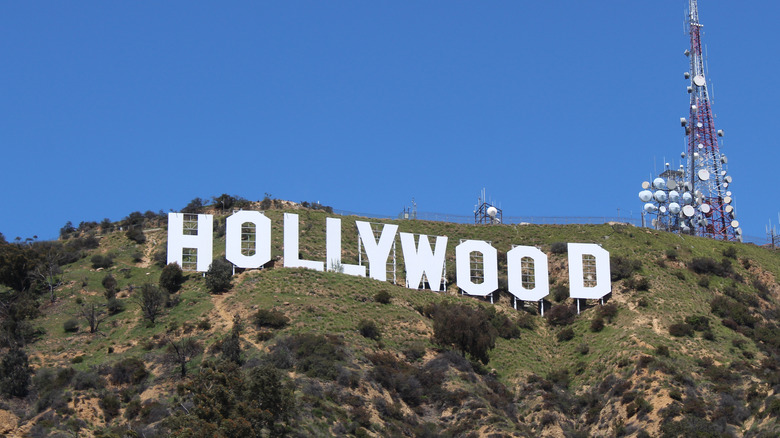
Here's The Hollywood Con Queen's Surprising Identity
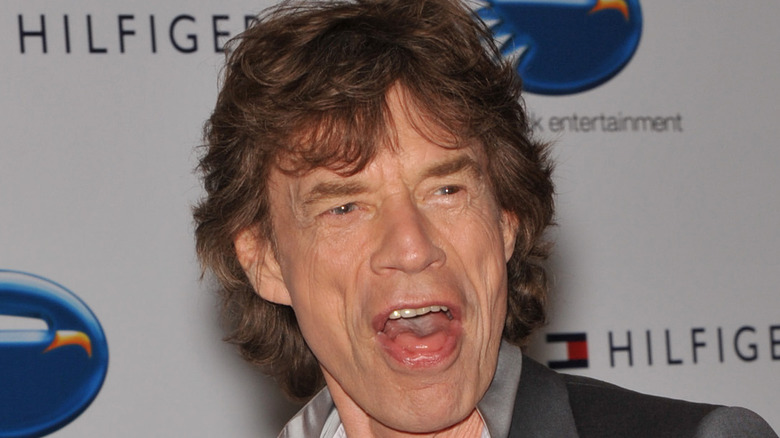
The Moment In Mick Jagger's Career When He Went Too Far
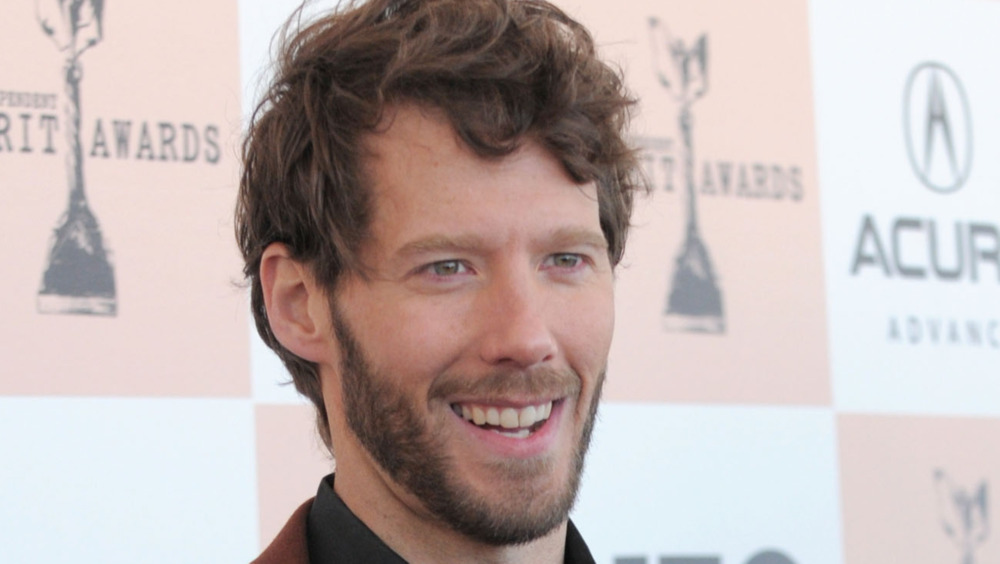
Details You Didn't Know About Aron Ralston
